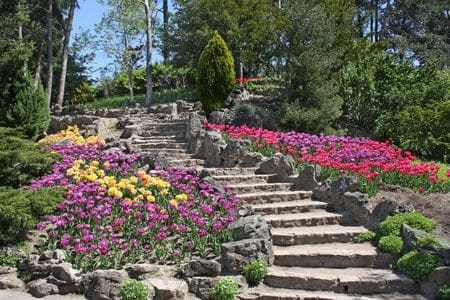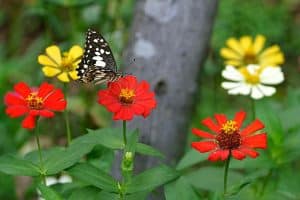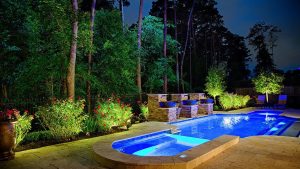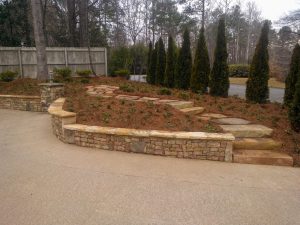Picture in your mind an empty canvas. It is plain white until a painter steps up to it and begins brushing onto it different colors in different patterns. A skilled painter is deliberate in his choice of colors. He doesn’t simply throw together an arbitrary mix of colors, but works with a color palette specific to each work. Your garden is just like a painter’s canvas; having a plan for the colors you use is an important element in its aesthetic appeal.
Especially if you are unclear as to what you want your garden to look like, beginning with neutral colors is a good way to start. Neutral can encompass a variety of colors: green, of course, but also white, silver and even black. Once your landscape has some of these colors, follow your personal taste about the next colors to incorporate. It can seem impossible to choose flowers for your landscaping – especially when you have hundreds to choose from at your local nursery. So a good idea is to stick to either one or two colors. A monochromatic color scheme, which uses only one color, is still far from dull, given the variety of tones and tints found in nature. A complementary color scheme, using two colors that play off each other such as orange and blue, or purple and yellow.
Some colors complement each other better than others. Green and red play off of each other nicely; violet and yellow are a great color combo; and blue and orange are a classic duo. Using complementary colors will add vibrancy to your garden. Want to experiment with some new colors? Consider adding a few annuals in a new hue this year. They are an inexpensive way to play with color in your garden.
Another important factor when it comes to the color profile of your garden is light. When do you enjoy your garden the most? During the morning, or at dusk? Yellows, reds and oranges are warm colors that will pop in bright sunshine. But they can appear overly loud and harsh at midday in a sunny area. Purples, pinks and blues are cooler, more tranquil colors, especially welcome during a hot Georgia summer. An all-white garden can be appreciated even in the waning sunlight of the evening, when white blossoms will be the last thing visible after the sun goes down.
Regardless of your color plans, once your garden begins to form its own personality, it is important to follow through with it and be deliberate about its color scheme. Every garden has a unique personality, and color is a great way to express that personality.








